To view a PDF of this story, click here and to read a Q&A from an architectural color consultant about her insights and advice on color.
By: Jesse Carleton jcarleton@nrha.org
If you sell paint, you’ve got a lot of company. Specialty stores, other independent home improvement stores, farm supply stores, big boxes and even discounters like Walmart all want to sell to it.
But while many retailers can put paint cans on shelves, few are able to fully maximize the category. Doing this requires a retailer to stay on top of trends, keep abreast of the latest product innovations, create an inspiring in-store presentation and offer knowledgeable assistance.
Simply put, being successful with paint means going beyond the basics and finding ways to make your paint department stand out from the competition.
To see what separates the good from the best, we spoke with three retailers who have mastered the art of selling this category. They talked about consumers’ changing demands and how they strive to be proactive in meeting those demands. Since the best paint retailers always have an eye on fashion, we also spoke with a representative from the Pantone Color Institute to let you know what’s new and trending in color and design for 2016.
1. ABS—Always Be Sourcing
The success of your paint department depends on your willingness to change quickly with trends in the market. Last year, Jay Donnelly, vice president of sales operations at Flanagan Paint, a specialty paint storein St. Louis, Missouri, brought in a line of new products. This year, he’s working to get that same line replaced because they’re already outdated.
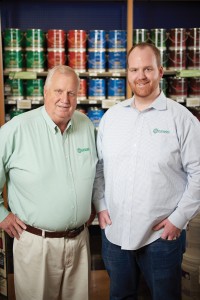
“That’s how fast things change in this industry,” he says. “I have to update my inventory continually. But I’ve noticed that when I visit some independent hardware stores, and look at their paint departments, many of them are not staying up with the trends and they are letting their products get obsolete.” Even when distributors make it easy to return products in exchange for new items, many retailers don’t go through the trouble of swapping them out, he says, and that can have a negative impact on the success of the department.
Donnelly also serves on the board of directors of the Paint and Decorating Retailers’ Association. Being a part of an industry association, he says, helps him stay current with paint trends, especially because he has the opportunity to interact with other paint professionals across the country.
One of the hottest trends in the paint category right now, for example, revolves around specialty paints and applicators. Chalk and chalkboard paints, as well as mirror and glow-in-the-dark paints, continue to be popular.
Stephanie Hunter, floor supervisor at Wildomar Ace in Wildomar, California, says paint that creates a weathered, antique look is one of the most popular trends she’s seen. She adds that rags, chip brushes and other tools are what do-it-yourselfers are using to produce that look.
Whatever the current trend, the best paint retailers are those who keep an open mind about what specialty paints might catch on and who search trade shows and magazines for the latest product trends.
2. Create an Exceptional Shopping Experience
Before you can even start putting yourself forward as the retailer of choice in paint, you need to look the part. While it’s important to have bright light and fully stocked shelves, it’s not enough if you want to be an exceptional paint retailer.
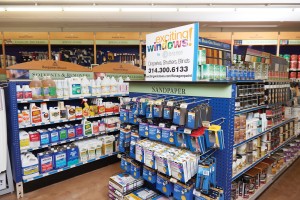
Consumers generally expect a different experience when choosing colors to paint their homes than when, for example, they buy a box of nails. They want a place where they can feel comfortable browsing. And if they’re going to buy a premium product, they expect a premium shopping experience.
“If you’re trying to sell a $60 gallon of paint, you can’t have your department looking 60 years old,” Donnelly says. He laments that he’s seen too many stores let their paint departments go years without an update.
At Flanagan Paint, Donnelly doesn’t let a year pass without making at least a minor adjustment to the store layout. This year, he’s going for a larger remodel.
“We’re trying to make our business as trendy as we can,” he says, “and I’m not comparing where I want to be with Sherwin-Williams or Home Depot. I compare what I want to do here with a store like Coach or Kate Spade. People go to those stores even if they’re just going to walk around and look. Consumers want to shop where it’s fashionable, and that’s the type of experience we’re trying to deliver.”
If it’s been a while since you’ve given your paint department a makeover, you’re likely overdue. Most retailers who do well in paint focus on the customer’s paint-buying experience. That means staying current on color racks and planograms from your paint vendor. Keep new and premium products at eye level at the entrance of your paint department. Make a place that’s comfortable to sit, look at color swatches and talk with a paint consultant.
3. Get to Know Pinterest
Ask nearly any retailer what’s new in the paint department, and it won’t be long before you hear the word “Pinterest.” This social media platform has given do-it-yourselfers a whole new level of confidence about doing projects themselves, along with a wealth of new ideas. DIYers who find a project they’d like to try on Pinterest typically end up in your store asking for the products to complete that project. If you want to be a top-tier paint retailer, you should look at Pinterest, too.
“We spend a lot of time studying Pinterest, so we stay on top of what’s trending and so we’ll know how to do certain projects,” says Donnelly. Customers may know what the finished project will look like, but are not always sure how to get there, or what products to use. “We help people figure out how to do a particular project, and when we do, that customer’s going to come back. Having the patience to work with a customer like that is part of offering great customer service.”
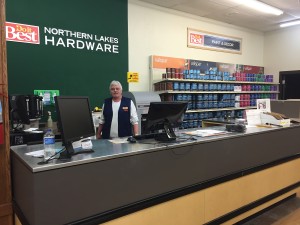
Hunter looks everywhere for trends, including Pinterest and HGTV, so she can stay one step ahead of her customers. “The challenge is customers who want to use exactly what the blogger used,” she says. “We try to know what’s trending and all of the latest painting techniques so if we don’t have the exact same product, we can direct them to something similar.”
And don’t just follow on Pinterest: Lead the way with a page for your own store. Flanagan Paint has its own Pinterest page where customers can search for project ideas that involve the colors and tools found in the store. It’s also a great place for Donnelly to post project how-to information and establish his business as an authority on paint and design.
4. Be Proactive in Educating Consumer, Staff and Yourself
Waiting for a customer to ask a question about a project won’t always get the conversation started. Because of the wealth of information on the Internet, the average consumer today probably did a lot of research on the project they want to tackle, so they may not think they need your help.
Encourage your employees to start the conversation. The information the customer has may not always be accurate, so it’s important to find out exactly what they found out online, and then confirm if it’s really correct. To do that, it’s even more critical that employees are well-trained in product and project knowledge.
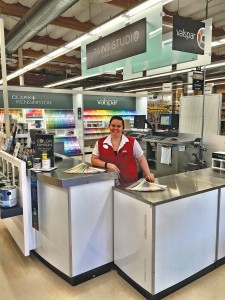
Taking the extra time to ask customers about their projects and make sure they have the correct information can help build the sale, not only with add-on products, but with the correct products. Donnelly, for example, believes that one of the most misunderstood parts of the painting project is the primer. Among the many different types of primers available, do your customers know the correct one to use? “They may initially choose a cheap primer, but if you educate them on the differences between the primers and the advantages of each, you could easily upsell them a better primer that does the job right,” he says.
In addition to being proactive in educating customers, the best paint retailers are proactive in providing ongoing education to their employees. Ed Albrecht, paint manager at Northern Lakes Do it Best Hardware in Hayward, Wisconsin, uses the slower first couple of months of the year to update himself and his employees on what’s new in the industry and refresh product knowledge. He’s tried out most of the products he sells at home, so he has firsthand knowledge of how to use them. He encourages employees to try out products too.
“I’m constantly researching new products online and forever taking classes from our vendors and Do it Best so I know as much as I can about the category,” he says.
5. Don’t Be Afraid to Sell Top-Quality Products
All of the paint retailers Hardware Retailing spoke with have noticed more and more consumers are buying premium paints. “We’ve definitely seen a trend toward higher-quality paints, as people are willing to spend more for better quality,” says Hunter. An assortment that includes all price levels for each type of customer may not be that unusual for a paint department, but the best retailers are proactive in getting their customers to try the higher level of products.
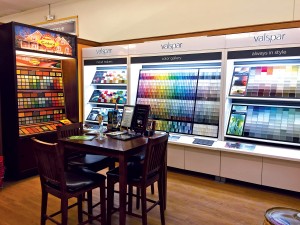
Albrecht, who sells anywhere from 150 to 250 gallons of paint out of his store every week, is willing to give away a premium item if it means his customer will at least try it.
“My do-it-yourself customers used to come in and get the cheapest rollers they could find,” he says. “Then I started giving them quality roller covers for free and asked them just to try it. Now, they’re hooked on them and buy them constantly.” He might have given away a few premium roller covers, but he has since sold many more.
As Albrecht has found, usually convincing the customer to buy a premium product rather than a cheap one involves some education. Donnelly takes the tactic of the impromptu in-store demonstrations to show the differences between paints and sundry items. “Sandpaper is a good category to show a customer a quality product,” he says, “because after a quick demonstration between low- and high-quality papers, they can easily see the difference.”
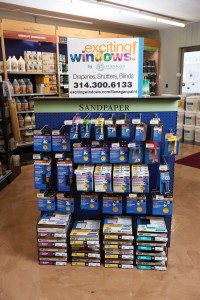
Sometimes, Donnelly finds it’s helpful to simplify the language he uses to distinguish the different levels of paint he offers. “We usually ask customers, ‘Is this paint for your forever home, your 5-year home, or your investment property?’ That usually helps them decide what type of paint they should buy.”
Don’t think that do-it-yourselfers are the only ones who need education about quality products, either. Oftentimes, Donnelly and Albrecht have to educate their contractors who have always gone for the lower-quality items, but may be willing to switch once they know the benefits of a better product. Albrecht also uses his giveaway tactic to promote new products or to hook the business of a prospective customer.
“I once gave a contractor a 5-gallon bucket of paint to try, and now he buys about 300 gallons a year from me,” he says. “He’s also with the local housing authority, so now he buys a lot of other hardware items from me, too.”
 Hardware Retailing The Industry's Source for Insights and Information
Hardware Retailing The Industry's Source for Insights and Information






